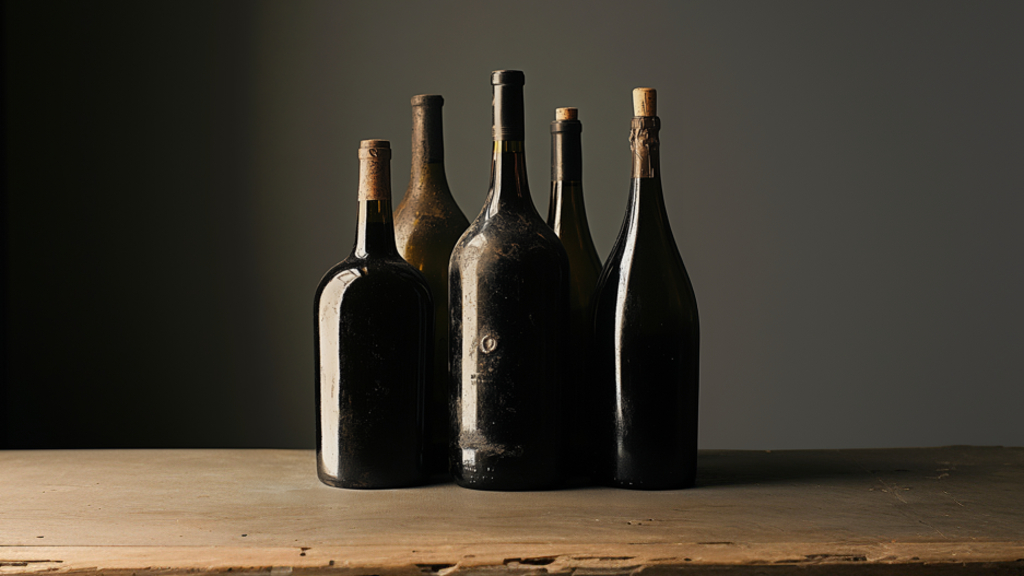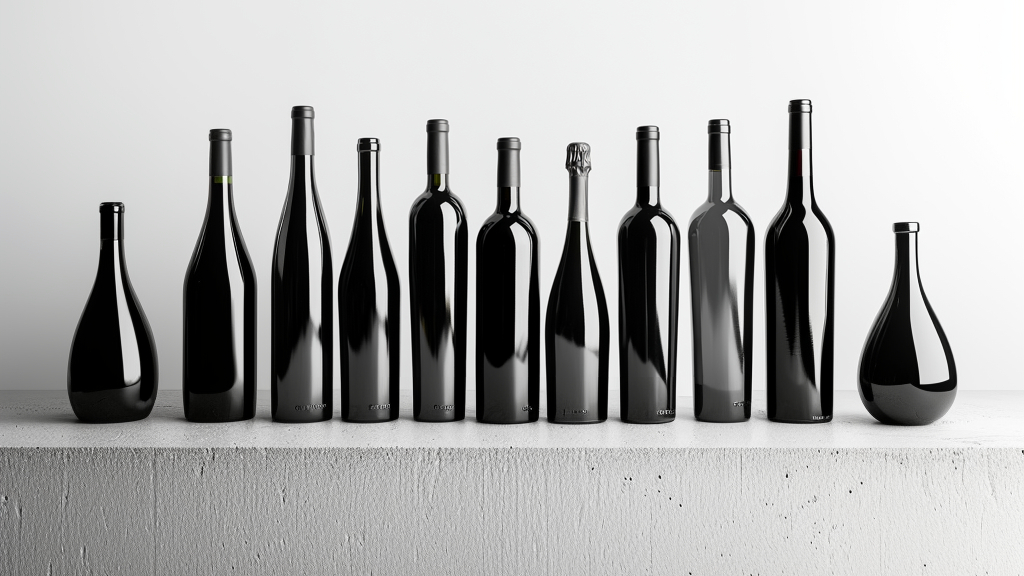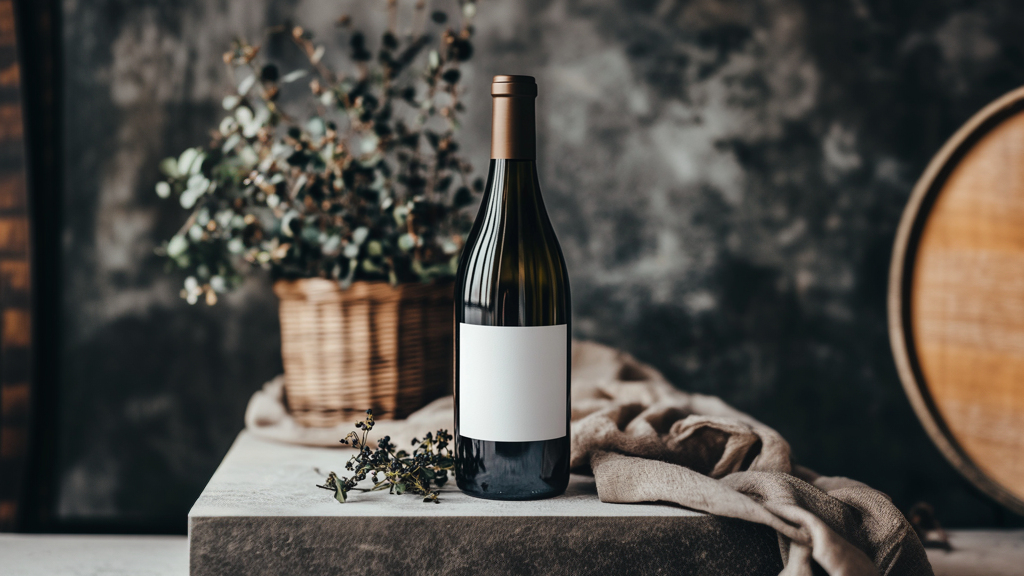Does wine taste better from larger bottles?
Wine Bottle Sizes - From Piccolo to Melchizedek

From Piccolo to Melchizedek
Wine bottles come in a variety of sizes and shapes. The size of the bottle not only plays an important role in terms of the quantity of its content but also in terms of its aging potential and storage capacity.
The "normal" wine bottle
The most commonly used wine bottle size holds 0.75 liters and is often referred to as the standard bottle, regular bottle, or "Bouteille." But why exactly 0.75 liters?
he answer lies in the 18th century, when European trade with England had to be standardized. The English used the imperial gallon (4.5 liters), while Europe used the metric system. Wine was traded in 50-gallon barrels, which amounted to about 225 liters. One barrel corresponded to exactly 300 bottles of 0.75 liters. This size became the norm as it aligned with both the European and English measurement systems.
Step by step
In addition to the standard bottle, there are various wine bottle formats that are widely used. Some are smaller bottles, while others are much larger. Vinoteqa explains the meaning behind these different formats:
- Piccolo (0.25 liters) Depending on the manufacturer, the Piccolo bottle holds between 0.1875 and 0.25 liters. It is the smallest wine bottle, suitable for a single glass of wine. It is often used for champagne, making it ideal for small gifts or personal enjoyment.
- Half bottle or Demi Bouteille (0.375 liters) As the name suggests, this bottle holds exactly half of a standard bottle. It is especially suitable for sweet wines and is therefore quite common.
- Bouteille (0.75 liters) The standard size with a 0.75-liter capacity is the most widely used worldwide. Its content became an EU standard in 1977, and in the U.S., the 0.75-liter size became standard in 1979. About six glasses of wine can be poured from this bottle. The "Bouteille" comes in many different shapes, which we have listed here.
- Magnum (1.5 liters) The Magnum bottle is one of the most famous wine bottle sizes and is equivalent to exactly two standard bottles. It is particularly suitable for smaller groups in restaurants.
Believe it or not, bottles with a capacity of 0.5 liters or even 1 liter can also be found, but they are pretty rare and only used by some producers.
Does wine taste better from larger bottles?
The size of a wine bottle affects not only the quantity of wine but also its aging and storage capacity. Generally, the larger the bottle, the better the wine ages.
For large bottles, the glass is thicker, providing better protection against light. Additionally, temperature fluctuations are more easily managed in larger bottles. Wine can age more slowly, resulting in longer shelf life and more complex aromas.
The large wine bottle formats
Many of the larger formats have historical and often biblical names deeply rooted in history. Besides their content, the names of these bottles tell fascinating stories.
- Jéroboam/Double Magnum (3 liters) Named after the first king of the northern kingdom of Israel, the Jéroboam bottle is a highlight on any wine list. The name Jéroboam is especially common in Champagne and Burgundy. Also known as the Double Magnum, this bottle holds three liters and is perfect for special occasions.
- Réhoboam (4.5 liters) When it comes to 4.5 liters, Burgundy, Champagne, and Bordeaux all agree on one name: Réhoboam, named after Rehoboam, the son of King Solomon. Rehoboam ruled the southern kingdom of Israel, parallel to Jéroboam.
- Bordeaux Jéroboam (5 liters) Next up is a name that has already appeared: Jéroboam. However, in Bordeaux, the Jéroboam bottle holds five liters, unlike the three liters in Burgundy and Champagne. Slightly confusing!
- Mathusalem/Impériale (6 liters) The six-liter bottle, holding eight standard bottles, has different names in different French wine regions. In Bordeaux, it is called Impériale (with Bordeaux shape), while in Champagne and Burgundy, it is known as Methuselah (with Champagne or Burgundy shape), named after the oldest person in biblical history, who is said to have lived for 969 years.
- Salmanazar (9 liters) Salmanazar, king of Assyria, lends his name to the bottle that holds an impressive nine liters of wine.
- Balthazar (12 liters) This bottle is named after Balthazar, one of the three wise men. Holding 12 liters, it is quite rare to find.
- Nebuchadnezzar (15 liters) Also rare is this format, which holds a whopping 15 liters of wine. Nebuchadnezzar was the king of Babylon..
Beyond these, there are even larger wine bottles, such as Melchior (18 liters), Solomon (20 liters), Sovereign (25 liters), Goliath (27 liters), and Melchizedek, with 30 liters of wine. Not all of these formats are standardized, and some are symbolic bottles often produced as unique pieces.
So, what is the "right" bottle size for a wine cellar?
Whether you are managing a wine cellar for your restaurant or hotel or simply looking to expand your wine list, understanding the different bottle sizes and their history can help refine your selection.
In short, there is no one right or wrong bottle size. It's all about the mix!
Cheers 🍷


